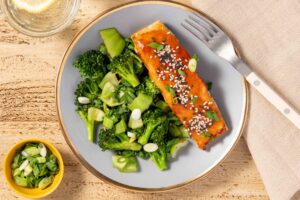Dinnerly vs Competitors
Dinnerly distinguishes itself from the competition in two primary ways:
- Its cost—Dinnerly is almost half as expensive as other meal delivery services
- Its simplicity—The recipes typically require fewer steps and fewer ingredients
Here’s how Dinnerly stacks up against specific competitors:
Dinnerly vs Everyplate:
Of all the competitors, Everyplate is most similar to Dinnerly. Both brands provide a cost-conscious way to create classic, home-cooked meals that appeal to even the pickiest eater. The prices are pretty comparable, and the shipping costs are the same. The menus are also extremely similar—each focuses on comfort food over exotic cuisine. Like Dinnerly, Everyplate does not offer meal plans catering to specific dietary preferences, but there are always five vegetarian meals on the weekly menu.
Perhaps the biggest difference between these two brands is that Dinnerly offers more menu selections every week—47 compared to EveryPlate’s 17, and more add-ons thanks to its “Market by Dinnerly.” Customers can shop the market for grocery items and packs of chicken breasts and fish, plus seasonal specials like desserts, snacks and more. Everyplate does offer some protein packs and a limited number of desserts, but their offerings are not nearly as robust as Dinnerly’s.
Dinnerly vs HelloFresh:
HelloFresh recipes are more culinary masterpieces than classic comfort food, but that comes at a cost—HelloFresh is nearly twice as expensive. The better option for you depends on your priorities. Dinnerly is a great choice for the busy, cost-conscious crowd, and for those who appreciate simple, classic flavors. HelloFresh is optimal for those who crave menu variety and culinary creativity—and don’t mind paying more to get it.
Dinnerly vs Home Chef:
Home Chef offers fewer menu options than Dinnerly—20 compared to Dinnerly’s 47. Home Chef is also more expensive than Dinnerly, and offers fewer vegetarian recipes—they offer one meat-free recipe every other week.











